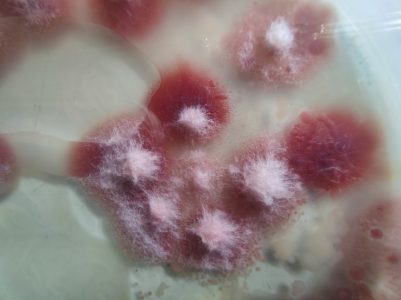Mycotoxin contamination> Mycotoxins are secondary fungal metabolites that
can be found in a wide range of raw materials used in human and animal feed.
| Although there are hundreds of mycotoxins, regulatory limits and guidelines for maximum tolerated levels in foods have only been established for a few. |
The acknowledgement of the negative effects of
mycotoxins on health and productivity in pig and poultry farming has led to the establishment of maximum tolerance levels for aflatoxins. As well as the creation of regulatory guidelines (recommended tolerance levels) for ochratoxins and a small amount of fusarium toxins.
Limits vary according to:
- mycotoxin type
- animal species
- intended use
- type of raw material
- food and diet
- according to the regulatory body or the country
Mycotoxin analysis
 Sampling plays a crucial role
Sampling plays a crucial role in the accuracy of mycotoxin level determination. It is often the main source of variation associated with mycotoxin analysis, causing close to 90% of error in some analyses (
Turner et al., 2015).
Regardless of the analytical method, mycotoxin concentrations are usually expressed as μg/kg on the basis of dry material.
Positive results are those observed in samples which are above the limit of detection (LOD) and quantifiable results are those that are above the limit of quantification (LOQ).

LOD and LOQ vary greatly depending on the analytical method which is used. Therefore, data comparisons between different trials must be done cautiously (
Von Holst and Stroka, 2014).
 Factors affecting mycotoxin contamination
Factors affecting mycotoxin contamination
Mycotoxins are produced by fungi, so virtually all factors that have an impact on fungal development can affect mycotoxin production.
A simplified approach to fungal development and mycotoxin production is to separate fungi into two groups:
- Those that colonize plants before harvest, commonly called field fungi.
- Those that colonize plants or plant material post harvest. Known as storage fungi.
Raw materials are the substrate, and the main factor that influences mycotoxin production by fungi. The
second most important factors that determine what type of fungi will develop, are those associated with climate conditions
(rainfall, temperature and environmental humidity.)
- For example, in warm and humid subtropical and tropical conditions, corn cobs are colonized by species of Aspergillus flavus and A. parasiticus, resulting in aflatoxin production.
- On the other hand, in temperate regions, maize is a suitable substrate for colonization by Fusarium and the production of fumonisins, deoxynivalenol and other mycotoxins produced by the trichothecene family.

 Factors affecting mycotoxin contamination
Mycotoxins are produced by fungi, so virtually all factors that have an impact on fungal development can affect mycotoxin production.
A simplified approach to fungal development and mycotoxin production is to separate fungi into two groups:
Factors affecting mycotoxin contamination
Mycotoxins are produced by fungi, so virtually all factors that have an impact on fungal development can affect mycotoxin production.
A simplified approach to fungal development and mycotoxin production is to separate fungi into two groups: